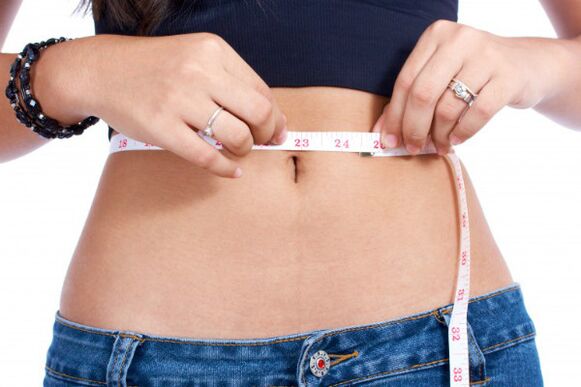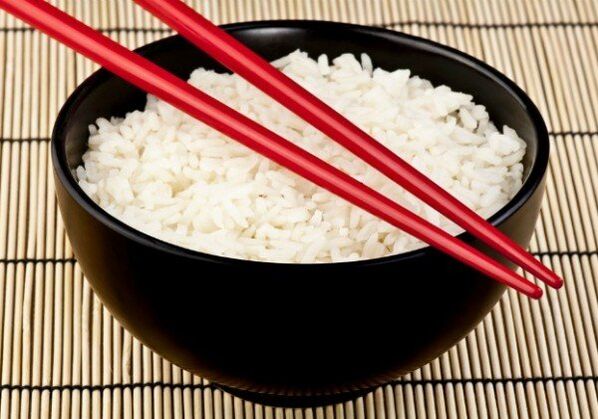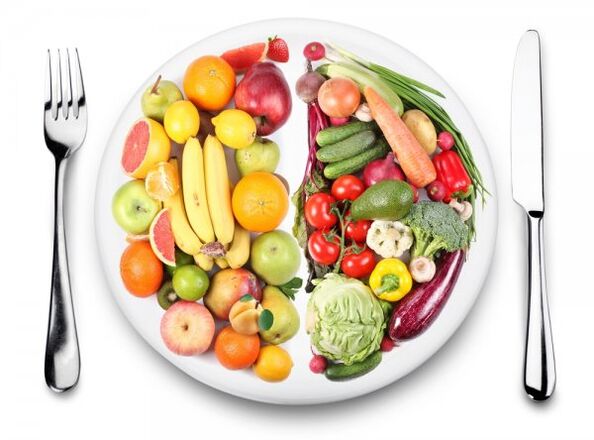The rapid popularity of the 7-day unsalted Japanese diet for weight loss is attracting the attention of an increasing number of modern women. The proposed article on a similar nutritional principle will help you prepare a menu and see incredible results. A crooked woman is rare in the Land of the Rising Sun. What is the secret of Japanese women? Climatic conditions, genetic factors, or the secret is hidden in the features of Japanese cuisine? And most importantly, can European women achieve such a result? Why not. You only need to use the advanced Japanese diet for 7 days. But before entering the "eastern weight loss", you need to get to know it better and learn what are the principles of such a diet, how it is applied to our country, what are the advantages, disadvantages and contraindications of this type. lose weight.

Basic principles of "Japanese weight loss"
The reason why the Japanese diet is popular for weight loss is that the Japanese are considered the healthiest nation in the world. This is evidenced by the fact that for centuries, the largest percentage of overweight and obese in this country is alien to the population. In addition, according to statistics, the Japanese rarely suffer from diseases related to the cardiovascular system, and their intellectual potential has long been the envy of the whole world. In addition, the Japanese lead an active lifestyle, go for walks and ride bicycles. Let's look at the basic principles of "Japanese weight loss" and understand their mechanism of action.
All this information interested doctors and nutritionists and encouraged them to study the Japanese nutrition system. Nutritionists who analyzed the diet using this method agreed that the duration of the Japanese diet should be 14 days to get results. At the same time, the menu is calculated for one week, provided that the diet is restarted from the eighth day. Thus, the basic principles of the Japanese diet for weight loss in 7 days were obtained.

- Eat in small portions to lose weight effectively. The Japanese diet is focused on results and is therefore against eating too much. Therefore, it is customary in Japan to eat with special sticks, which allows you to swallow food slowly without haste. And as you know, the slower a person eats, the faster the feeling of hunger passes.
- The use of sugar, salt and all kinds of spices is prohibited during the Japanese unsalted diet.
- Sweets and bakery products should be excluded from the diet. You need to eat rice instead of bread. It is the main food of the Japanese, which is healthier than bread products that contain a lot of sugar and starch.
- During cooking, it is necessary to pay attention to the quality of food and preserve the useful properties of the products. In Japan, "overcooked" food is not eaten, and all dishes are cooked softly. You should also avoid greasy "heavy" sauces and replace them with broths.
- Of the drinks, at least one and a half liters of green tea and clean water per day should be preferred.

How does the Japanese diet work?
Although the Japanese diet for 7 days is considered dangerous, harsh and ineffective by many, its popularity is constantly growing. The reason for this is the increase in the number of people who want to lose these extra pounds quickly. Let's see how the Japanese diet works and what safety principles should be followed. The secret of the incredible results of the Japanese diet is that people eat foods rich in protein and carbohydrates for seven to fourteen days and skip all fatty foods. Thus, the amount of daily calories needed for normal life is reduced.
The fact is that by sitting on a diet, a person tries to significantly reduce the amount of food consumed. However, the habit of overeating has a negative impact on the sharp changes in the diet, experiencing stress that does not allow the body to protect itself from constant hunger. The Japanese diet provides a lasting result for 7 days, because it is very pleased that the foods included in the list of allowed are rich in protein and proteins. A small portion is enough to satisfy hunger and increase strength, while losing weight will not eat extra calories.
7-day Japanese diet menu: what and how to eat?
It is important to include the right foods in your diet to keep the Japanese diet balanced. Important components of the Japanese diet are seafood, rice, vegetables and fruits (except bananas and grapes), boiled meat, eggs, olive oil, fermented milk and soy products. The approximate version of the 7-day Japanese diet menu is further presented on this page. In principle, it explains how and what you can eat and what you should throw away.
In order to avoid the consequences of the diet for a long time, it is necessary to eat small portions and drink enough water to remove toxins from the body.
For convenience, it is recommended to compile a weekly Japanese diet menu and strictly follow such a nutrition system. We recommend that you buy everything you need to prepare food before you start to lose weight, so that you do not have to go to the store later and be deceived by prohibited products. A sample menu for the 7-day Japanese diet is shown below.
The Japanese salt-free diet is very strict and complex. To make it easier to endure, you need to be neutral. Every morning on an empty stomach should drink a glass of water with a little lemon juice (one tablespoon for each glass). It helps to remove toxins and toxins from the body, improves metabolic processes.

Monday
- Breakfast: green tea or coffee, drinks without sugar and / or milk;
- Dinner: 2 boiled chicken eggs, cabbage salad or meatless cabbage cooked in a tomato, a glass of tomato juice without the addition of salt;
- Dinner: 200 grams of boiled or cooked fish.
The second day
- Breakfast: you can take a small piece of black or rye bread, bran bread, coffee without the addition of sugar and milk;
- Lunch: 200 grams of boiled fish, cabbage salad with olive oil, a glass of tomato juice without salt;
- Dinner: 100 grams of boiled meat and a glass of kefir.
Wednesday
- Breakfast: coffee without sugar and milk, biscuit biscuits (2-3 pieces);
- Lunch: vegetables fried in vegetable oil (except potatoes);
- Dinner: 200 grams of boiled meat, cabbage salad, 2 boiled eggs.
The fourth day
- Breakfast: 100 grams of boiled vegetables, unsweetened milk and milk;
- Dinner: 200 grams of boiled fish, a glass of tomato juice without salt;
- Dinner: 200 grams of any fruit except bananas and grapes.
5th day
- Breakfast: 100 grams of boiled vegetables, unsweetened milk and milk;
- Lunch: 200 grams of boiled lean meat, a glass of tomato juice without salt;
- Dinner: 200 grams of any fruit except bananas and grapes.
Saturday
- Breakfast: coffee without sugar and milk;
- Dinner: unsalted chicken (300 grams), cabbage salad with vegetable oil, a glass of kefir;
- Dinner: 2 boiled eggs, 200 grams of cooked vegetables (except potatoes).
Seventh day
- Breakfast: green tea;
- Lunch: 200 grams of boiled lean meat;
- Dinner: 200 grams of boiled unsalted lean meat, cabbage salad with vegetable oil, a glass of kefir.
At the end of the week, the scales will show a response of 5-7 kilograms. If you need to lose more, you should switch to the second round of the Japanese diet. After that, you must take a break and return to the method of combating excess weight no later than six months.

Results, advantages and disadvantages of the Japanese diet
Any advantages and disadvantages should be considered through the prism of achieving the set goal. The results of a 7-day Japanese diet to lose weight affect the rate of weight loss by removing excess fluid from the body. As a rule, lose 5-7 kg per week. The benefits of the Japanese diet are rapid weight loss, elimination of toxins and toxins from the body, and improved metabolism in the body. Due to weight loss, the work of the joints is normalized, the body is lighter. In addition, in terms of financial value, the Japanese diet is cheaper than other methods.
The disadvantages of the Japanese diet are stiffness and unstable results. Lack of fat and salt in the weekly diet promotes the removal of excess fluid from the body, which leads to rapid weight loss. After these foods return to the diet, weight gain begins again. To try to slow down this process, you need to get out of the diet properly and gradually include forbidden foods in the menu, if it is impossible to give them up completely.
Exit the Japanese diet
Thus, at the end of a week of "fasting" and weight loss, kilograms do not return, it is necessary to get out of the diet properly. Exit from the Japanese diet should be smooth and gradual. The following guidelines will help reinforce the results obtained from the Japanese diet for 7 or more days.
- It is not recommended to change the diet drastically, forbidden or restricted foods should be added gradually in small portions.
- As the body adapts to the new nutritional conditions, salt and sugar should be added gradually, as these products can retain fluid in the tissues and turn into fat deposits.
- In the first weeks, dinner should be done as in the diet. protein. It is strictly forbidden to eat 2 hours before bedtime.
- The minimum adaptation period of the body after the Japanese diet is 15 days.
To whom the Japanese diet is contraindicated
No matter how much everyone wants to lose weight, there are a number of contraindications to going on a Japanese diet because it is fraught with deteriorating health. The risk groups to which the Japanese diet is contraindicated include:
- pregnant and lactating women;
- Children under the age of 18;
- people suffering from diabetes;
- people with chronic and acute diseases.
The process of losing weight in the Japanese diet will be different for everyone, because each organism has its own characteristics. To strengthen the long-term results, you need to reconsider your dietary principles after a diet, exclude fats and simple carbohydrates, and limit salt intake. This will not only help you stay in good physical shape, but also help your whole body to heal.
















